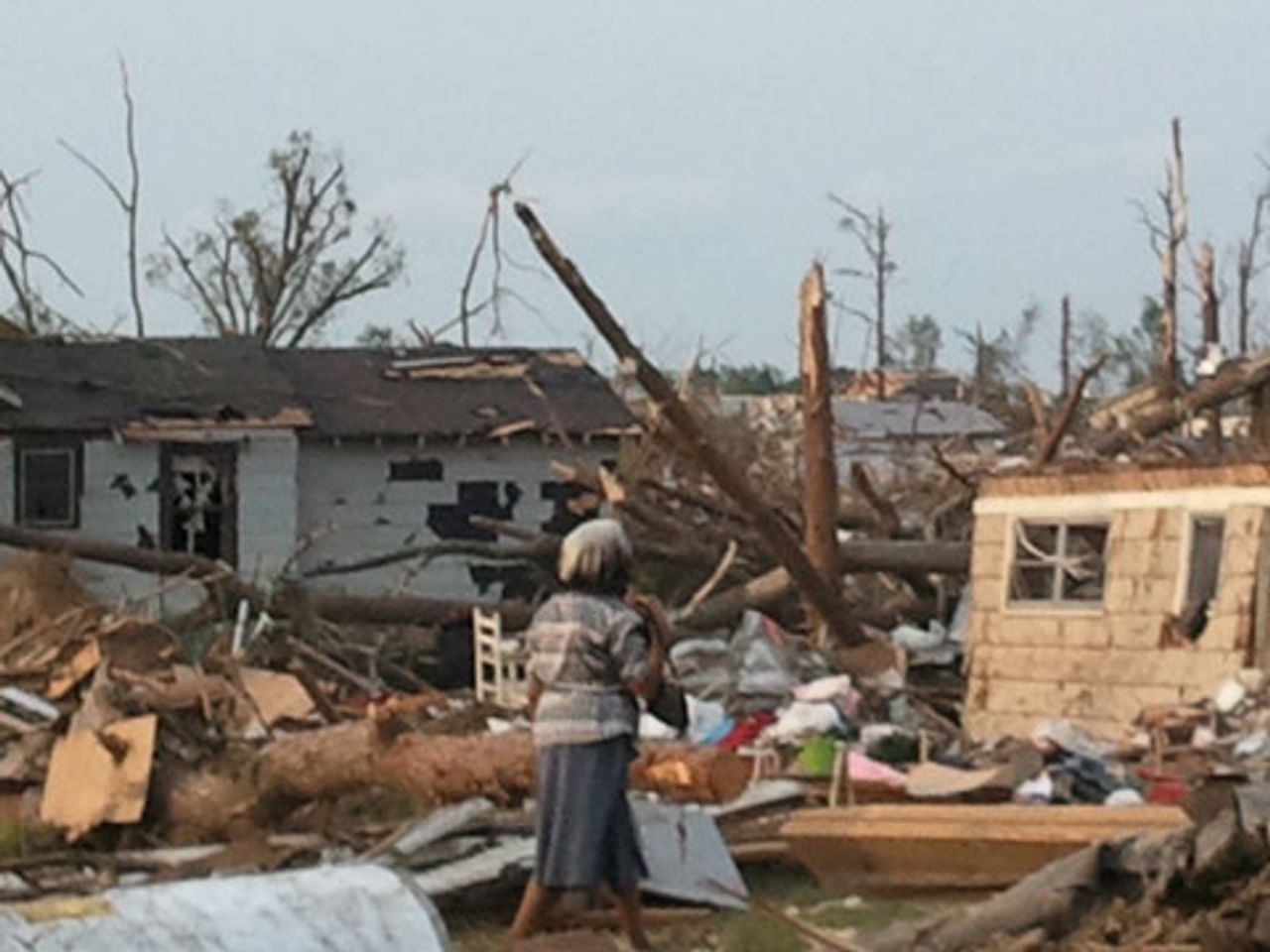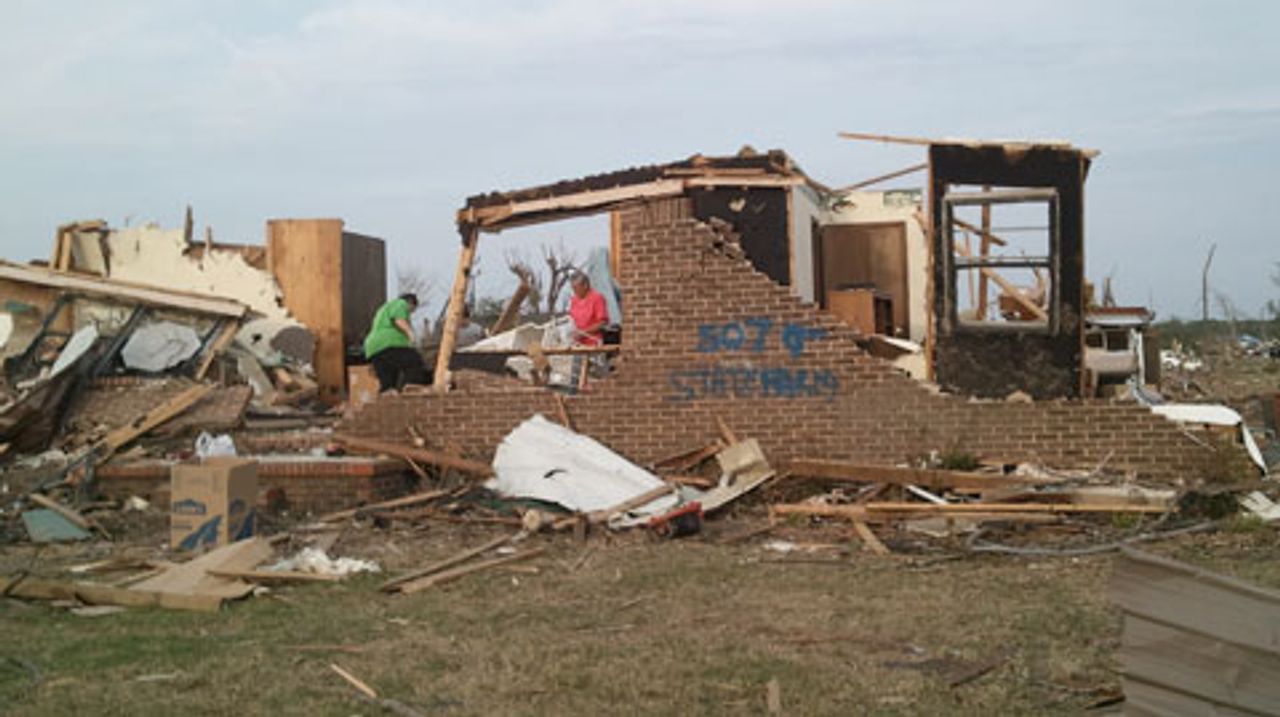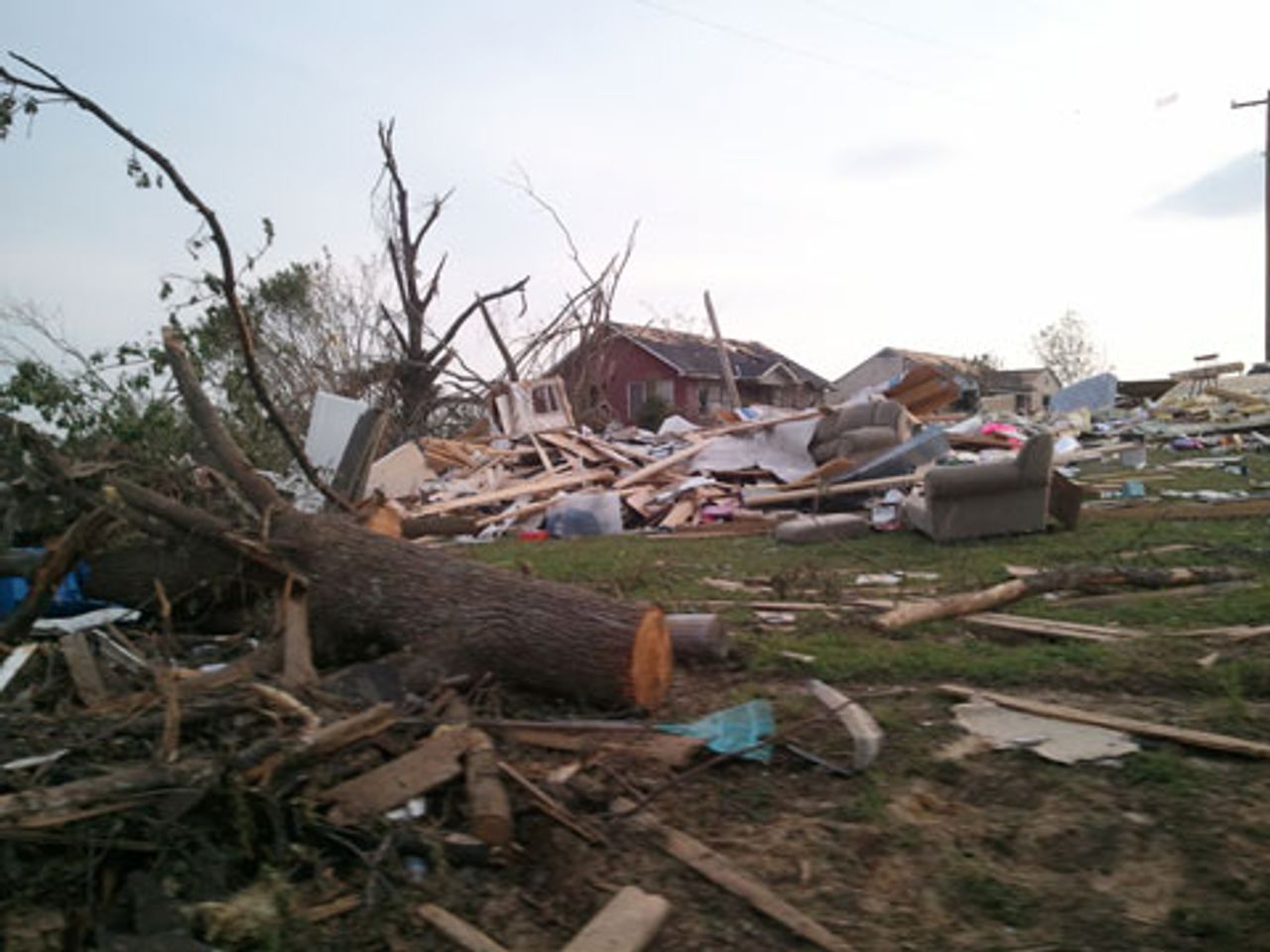 [Photo: Amy Sharp]
[Photo: Amy Sharp]One month after tornadoes ripped across the US South in April, devastated communities are struggling to rebuild without meaningful federal aid.
Between April 25 and 28, a supercell thunderstorm spawned at least 327 tornadoes in 21 states. More than 340 people were killed. Alabama was worst hit, with 238 killed and thousands injured. Tens of thousands of homes, and entire towns, were obliterated.
Residents of central Alabama spoke to the World Socialist Web Site on the disaster and the conditions in which tornado survivors have been living since.
Sara Hodges, a telemarketer from the small town of Dora, was in her trailer when the tornado came through. Her home, situated at the top of a hill, had no storm shelter. “We didn’t have warning,” she said. “The local meteorologist said that the local weather tower had been knocked down early in the day. I was lucky because I went outside and I heard it. There was pressure in the air and I knew there were tornadoes in the area.”
 [Photo: Amy Sharp]
[Photo: Amy Sharp]After the storm passed, residents had no way of communicating with one another and the roads were blocked with trees and other debris. “A lot of us got angry,” Sara said. “The town lost power and didn’t have enough time to get any response together. Some people died. It’s known that tornadoes go through the area, but not to that extent.
“You know how Hurricane Katrina came through and there was no communication? It was like that. A lot of us didn’t know what was going on for a day or two. You couldn’t get in or out of the area. We had to go 30-45 miles to get gas. There was a lot of disorganization for the first couple of days.”
“Every time you would try to call, for days, you would get only ‘network error,’ or ‘network busy’,” she said. “We only got power back on the fourth day, some didn’t get it back for a week or eight days.”
Even the most urgent needs have been met with a slow government response. “FEMA [Federal Emergency Management Agency] last week sent out a message saying that if you lived in Walker County, they would give you some money, $200, for food,” Sara said, pointing out that the sole grocery store in town had been destroyed. “In my county, it’s blue tarps on everything. Nobody is rebuilding, everybody is still picking up.”
“It’s sad. It’s not a very financially stable area. It’s your typical small town.”
 [Photo: Amy Sharp]
[Photo: Amy Sharp]Nearby Cordova, population 2,400, was devastated. In the immediate aftermath, National Guard troops were dispatched to blockade the city and prevent looting. A month later, residents are still sleeping in tents beside their ruined homes.
Despite overwhelming need for shelter and thousands of applications, FEMA has approved providing only 250 mobile homes to the state. As of Monday, a mere 35 of these units had been disbursed.
Cordova residents are being denied FEMA trailers by the local government, which has begun enforcing a previously ignored 1957 zoning ordinance banning single-wide mobile homes.
Mayor Jack Scott insisted, “We’re trying to better Cordova. We’re trying to clean up Cordova and keep it clean.” Spelling out the real motives behind the ban, Scott added, “We’re trying to keep the property values up. We’re trying to get it to where people will want to build homes on these vacant lots.”
Amanda Johnston lives in Concord, a town just west of Birmingham that suffered a direct hit by the same tornado that devastated Tuscaloosa. Six residents died and many were injured.
“The tornado came through three houses down from us,” Amanda said. “Our house came out relatively unscathed, a tree came through the back of the house, our garage is a pile of rubble, my car was smashed and a friend’s van. It’s gone.”
“I’ve been on the phone more in the last couple of weeks than in my entire life,” she said. “We were without power for two weeks. I had to stay on the phone with Alabama Power for weeks. It’s been like pulling teeth to get anything done by officials.”
Amanda said that much of the recovery work had been undertaken by volunteers and the residents themselves. “The tree trimming was done by church volunteers from Nashville, Tennessee,” she noted. “It’s been ‘I’ve always depended on the kindness of strangers’ here because without them we would be nowhere here. It would still be a complete disaster without them.
“The city’s response has been ok, but the government above the city, it’s kind of like, ‘where are they?’ I haven’t really heard a statement from the governor at all.”
“We didn’t go to FEMA, and the main reason why is because we had some friends who applied,” Amanda explained. “They had a huge oak tree go through their house. The way they looked at it was that they pay taxes, so they’re going to go and get whatever FEMA will give them to help.
“But FEMA said they would only pay to patch the hole in the wall and put up a lean-to where the roof was gone. They would have no cooking because their kitchen was destroyed, no power, and they would just be living in a shell of a house. So they had to move out into an apartment.
“We did get an insurance company adjuster out to our property—the insurance companies are trying to give them just enough that you can fix it up a little but not replace it. The adjuster left out the garage, and didn’t come inside our house to see the damage. We weren’t there to tell them what was missing and busted.”
“Concord is mostly older homes, and a lot them have basements, but there’s not a lot of storm shelters,” Amanda said. “There’s not a lot of places to build storm shelters. Most of the homes hit in other areas were newly built, cookie cutter homes, but here it was a lot of older homes, half a century or older.
The tornado left the town unrecognizable, she said. “The landmarks are gone. The forest isn’t there anymore. It’s been reduced to toothpicks. It’s nothing. The way it came through, the tornado cut the street sideways through the trees and now you can see nothing when you look out but blue skies.”
Amanda commented on the mainstream news coverage of the disaster. “The media will find the most redneck Podunk out there, to make it look like the South is really, really backwoods, or we’re all posh Scarlett O’Hara-type people,” she said. “But this is a small town and it’s just like everywhere. I’ve seen towns in England and across Europe that look just like this. And if a disaster like this struck a town in England, the result would be just the same. The people here aren’t rich, they’re blue collar, work in the mines, at US Steel.”
To readers of the WSWS, Amanda added: “Don’t forget we’re here, and that it’s going to be hard to rebuild. It’s going to take many, many years. It was reported on, and now the media treats it like it’s over—but it’s not over. It’s not going to be over for a long, long time. And I want people to remember us. We’re the same people who live next door to you, whether you’re in Germany or in California. We’re just like you.”
